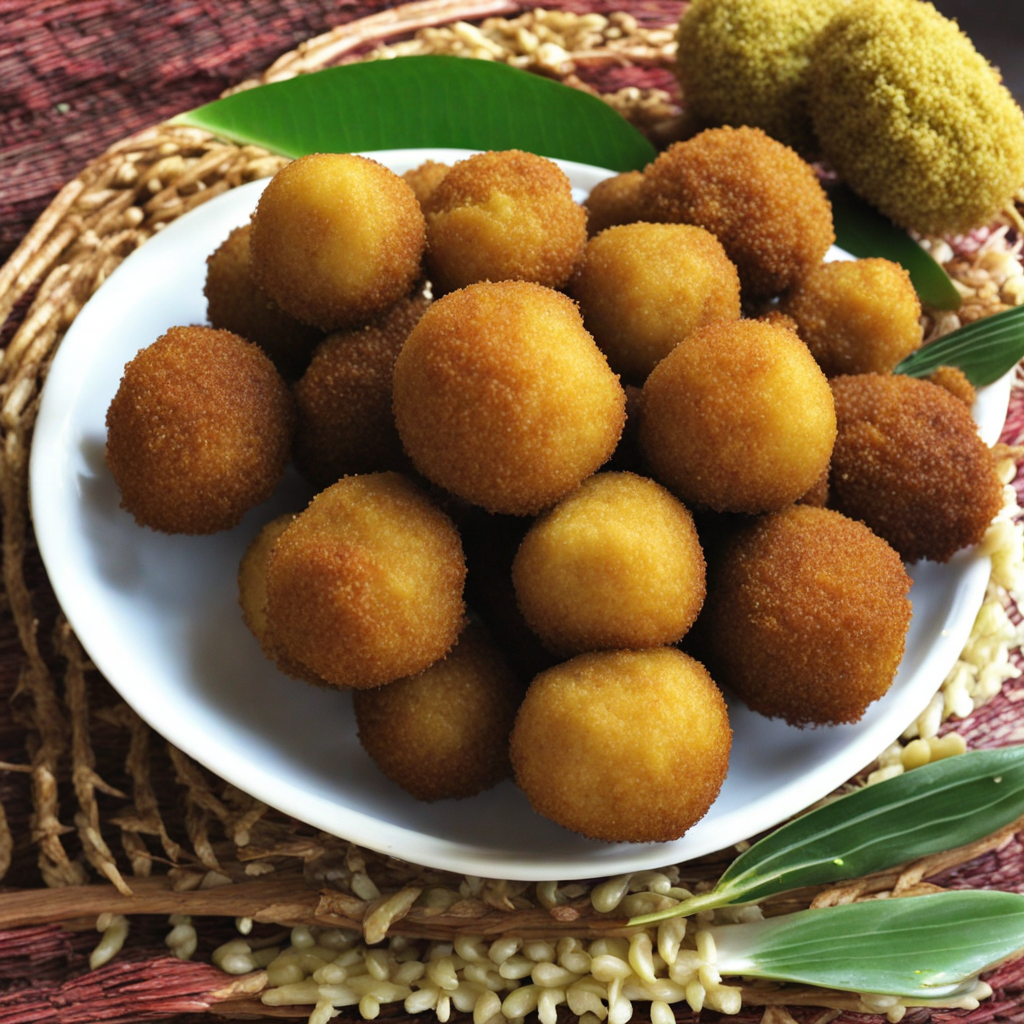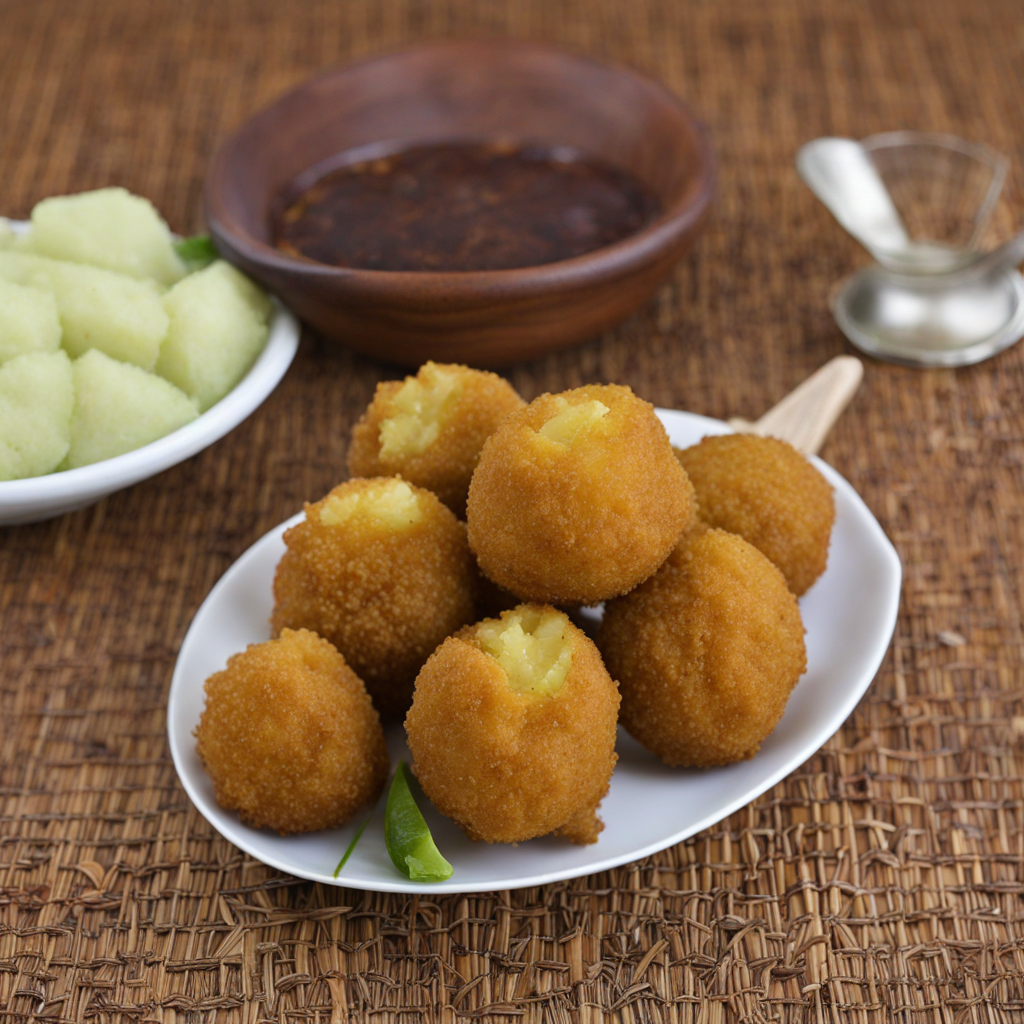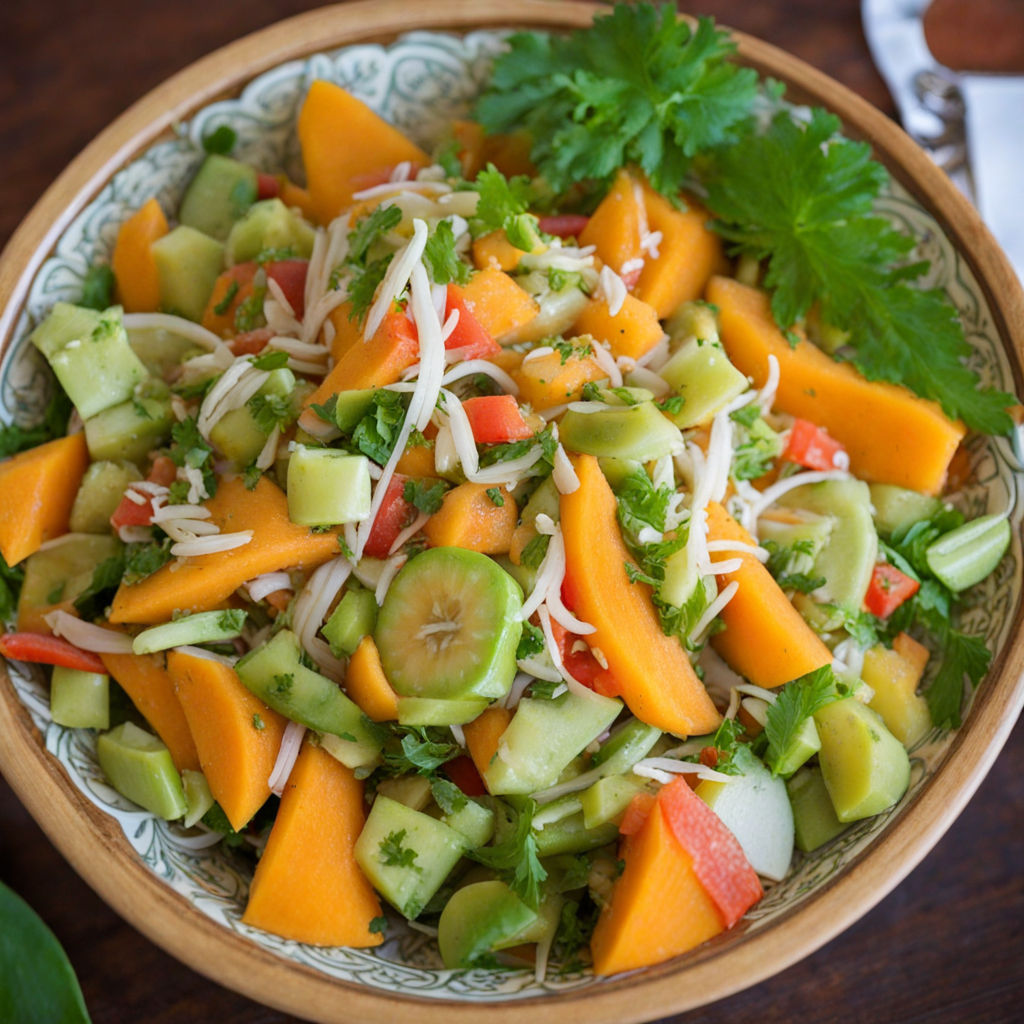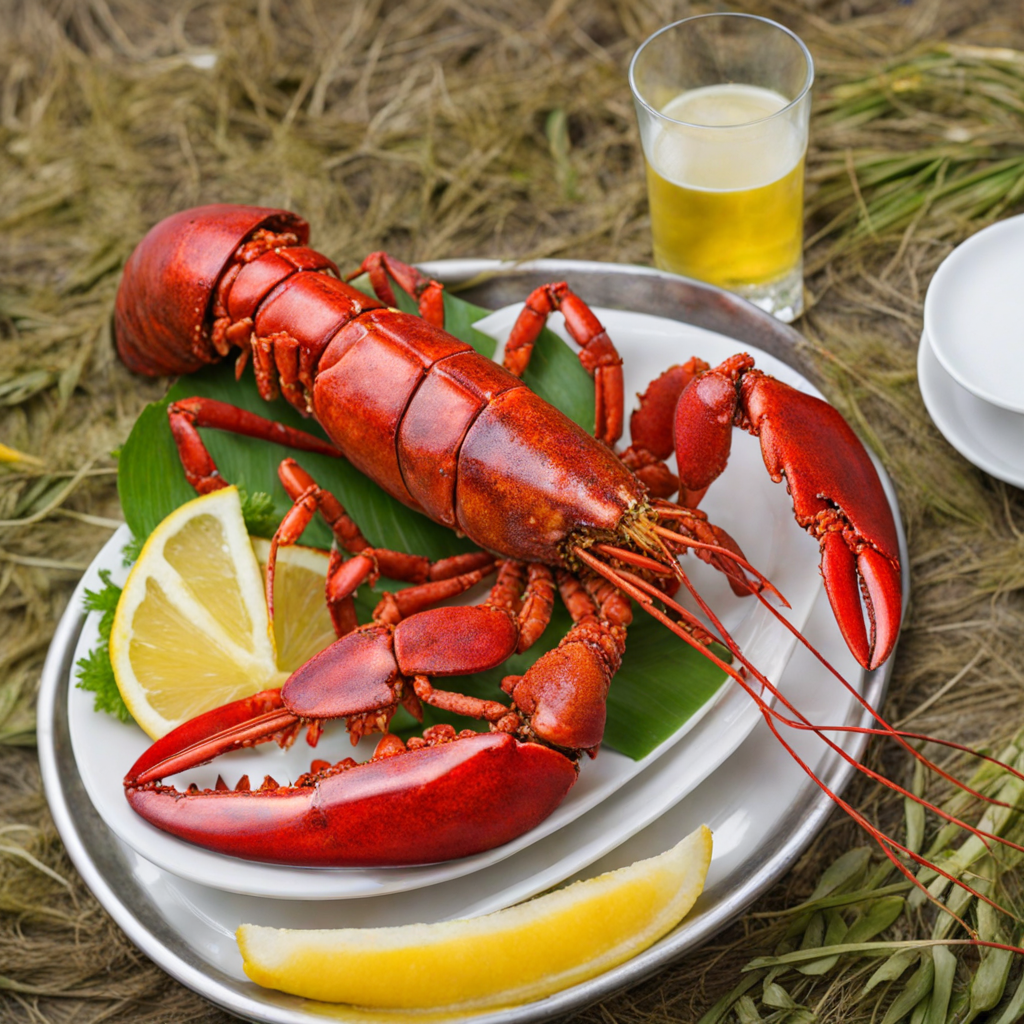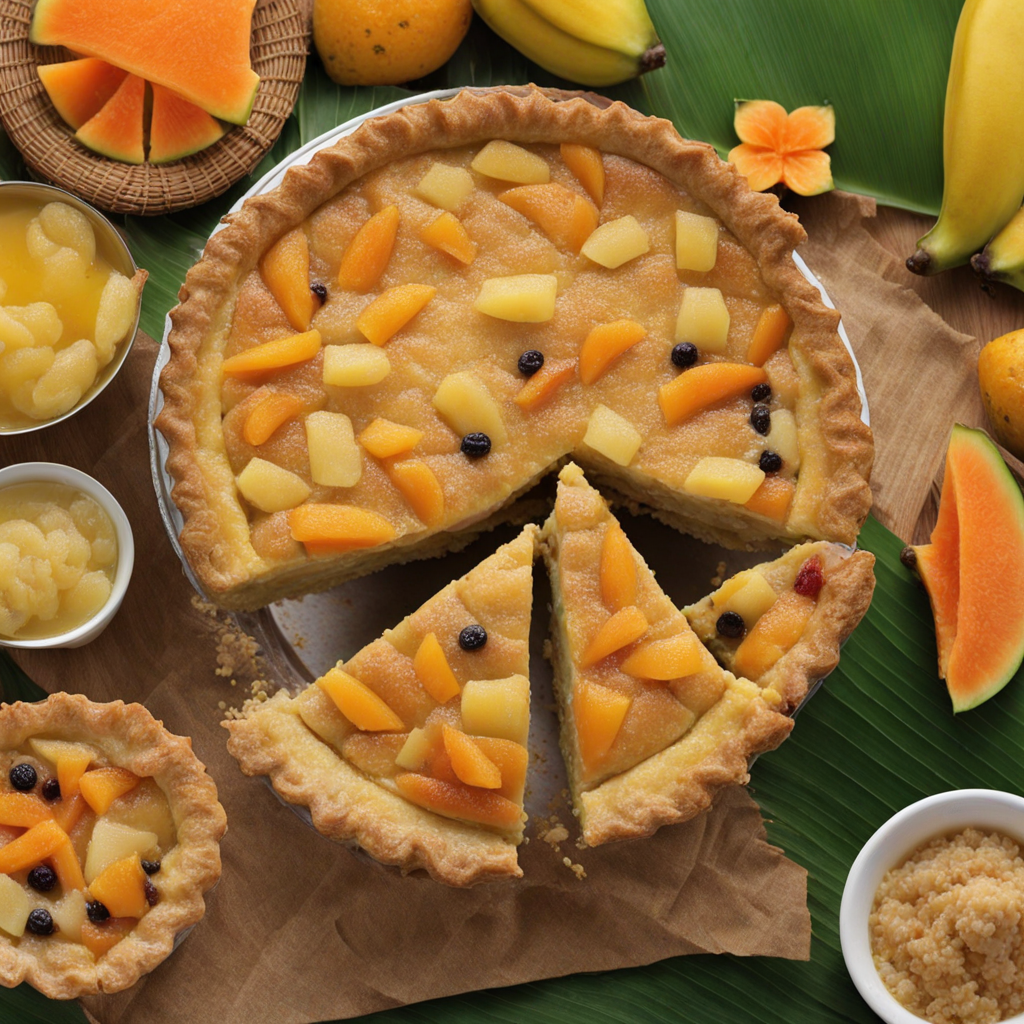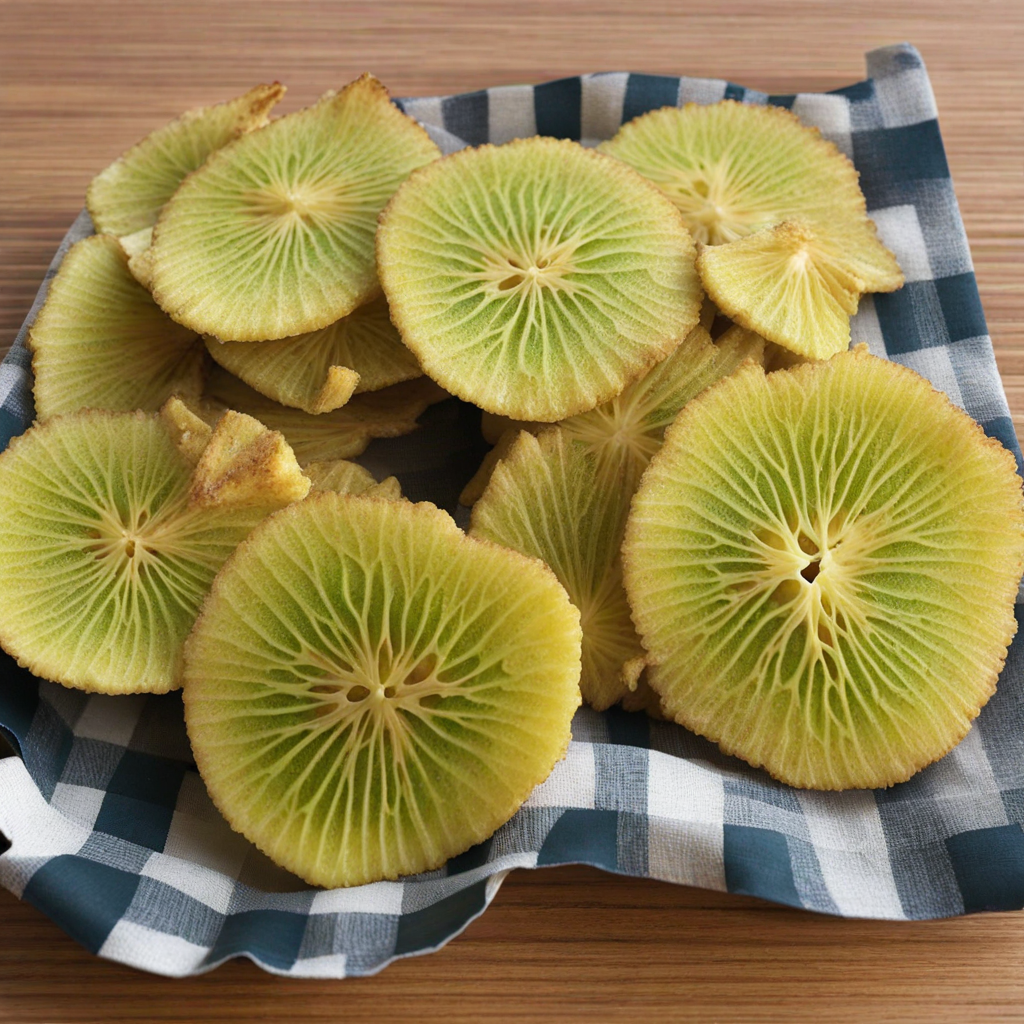Fried Breadfruit Balls
Fried Breadfruit Balls are a delightful and unique delicacy hailing from the picturesque country of Tuvalu. These savory treats are made from ripe breadfruit, a starchy tropical fruit that boasts a subtle sweetness and a creamy texture. The breadfruit is first cooked, often steamed or boiled, until tender, then mashed into a smooth consistency. The mashed breadfruit is combined with a blend of local spices and seasonings, creating a flavorful mixture that elevates the natural taste of the fruit. The addition of ingredients such as garlic and onion gives these balls a fragrant aroma, enticing anyone nearby to indulge in this scrumptious snack. Once the mixture is prepared, small portions are shaped into balls and then lightly coated in breadcrumbs to create a crispy outer layer. These golden-brown orbs are then deep-fried to perfection, resulting in an irresistible contrast of textures – a crunchy exterior enveloping the soft and fluffy breadfruit center. Each bite delivers a delightful burst of flavor, showcasing the versatility of breadfruit in Tuvaluan cuisine. The balls can be enjoyed on their own or paired with dipping sauces, such as a tangy tamarind or a spicy chili sauce, that enhance their taste even further. Fried Breadfruit Balls are not only a popular street food but also a beloved dish for gatherings and celebrations in Tuvalu. The communal aspect of sharing these tasty bites adds to their appeal, making them a perfect choice for any social occasion. With their unique flavor profile and satisfying texture, Fried Breadfruit Balls offer a true taste of Tuvaluan culture, inviting adventurous food lovers to experience the island's culinary heritage in a deliciously memorable way.
How It Became This Dish
Bolo Ma: A Culinary Treasure of Tuvalu Introduction Bolo Ma, a traditional dessert from Tuvalu, embodies the essence of the islands’ cultural heritage and the resourcefulness of its people. This delightful dish, often described as a sweet, steamed pudding, has woven itself into the fabric of Tuvaluan life, reflecting the islands' history, customs, and the impact of globalization. To truly appreciate Bolo Ma, one must explore its origins, cultural significance, and development through the ages. Origins of Bolo Ma The origins of Bolo Ma can be traced back to the early Polynesian settlers of Tuvalu, who arrived in the region over 2,000 years ago. These settlers brought with them a rich culinary tradition, utilizing the abundant natural resources of the islands. The primary ingredients of Bolo Ma—coconut, sugar, and flour—were readily available and became staples in the local diet. Coconut, referred to in Tuvaluan as "niu," is of particular significance. It is not just a food source; it is a versatile ingredient used in various forms for cooking, drinking, and even crafting. The arrival of European explorers and traders in the 16th century introduced new ingredients, including refined sugar, which further enhanced the sweetness of Bolo Ma. As a result, the dessert evolved, incorporating both traditional and foreign influences. Cultural Significance Bolo Ma is more than just a dessert; it is a symbol of hospitality and communal sharing in Tuvaluan culture. Traditionally, it is prepared for special occasions such as weddings, birthdays, and cultural festivals. The act of making Bolo Ma often involves the participation of family members, fostering a sense of togetherness and community spirit. In Tuvalu, food is often linked to identity and heritage. Bolo Ma serves as a reminder of the islands' rich history and the blending of indigenous and colonial influences. When served to guests, Bolo Ma represents not only the host's generosity but also the pride of sharing one's cultural heritage. It is common for locals to share recipes and techniques passed down through generations, ensuring that the art of making Bolo Ma continues to thrive. The Recipe and Preparation The traditional recipe for Bolo Ma typically includes grated coconut, flour, sugar, and water, sometimes enhanced with flavors like vanilla or pandan leaves. The ingredients are mixed to form a batter, which is then poured into a mold and steamed until cooked through. The result is a soft, moist pudding that can be enjoyed warm or at room temperature. Variations exist across the islands, with some cooks adding local fruits or spices to give their Bolo Ma a unique twist. The communal aspect of preparing the dish often leads to friendly competition among families, with each claiming to have the best recipe. Development Through Time The 20th century brought significant changes to Tuvaluan society, particularly with the advent of modern technology and globalization. While Bolo Ma remained a cherished part of the culinary landscape, the way it was prepared and consumed began to evolve. With the introduction of electric steamers and ovens, the cooking process became more efficient, allowing for larger batches to be made for gatherings. Additionally, the availability of imported goods meant that ingredients could be substituted or enhanced. For instance, the use of artificial flavorings or premade mixes became more common, though many still prefer the authentic, traditional method. As Tuvalu became increasingly connected to the global community, the influence of international cuisine began to seep into local practices. While this led to a diversification of food options, it also prompted a revival of interest in traditional foods like Bolo Ma. Increased tourism has played a crucial role in this revival, with visitors eager to experience authentic local cuisine. As a result, many Tuvaluan families have taken pride in showcasing their culinary heritage, making Bolo Ma a highlight of the cultural experience for tourists. Bolo Ma in Contemporary Tuvalu Today, Bolo Ma continues to hold a special place in the hearts of Tuvaluans, both at home and in the diaspora. The dish has transcended its humble origins, becoming a symbol of resilience and cultural pride. In an era where globalization threatens to overshadow local traditions, Bolo Ma stands as a testament to the enduring spirit of Tuvaluan identity. Community events and national celebrations often feature Bolo Ma, reinforcing its role as a unifying element in Tuvaluan society. Efforts to preserve traditional cooking methods have also gained momentum, with local organizations and schools emphasizing the importance of culinary heritage. Workshops and cooking classes focused on traditional dishes, including Bolo Ma, have become popular, ensuring that younger generations appreciate and carry forward these culinary traditions. Moreover, social media has played a significant role in bringing Bolo Ma to a wider audience. Recipes and stories about the dish are shared online, allowing Tuvaluans abroad to reconnect with their roots and introduce their friends to the flavors of their homeland. This digital presence has sparked an interest in Tuvaluan cuisine globally, with food enthusiasts and chefs eager to learn about and replicate traditional dishes. Conclusion Bolo Ma is more than just a sweet treat; it is a cultural emblem that reflects the history, community, and resilience of the Tuvaluan people. From its origins as a humble pudding made from local ingredients to its place in contemporary society as a symbol of cultural pride, Bolo Ma has evolved while remaining true to its roots. As Tuvalu navigates the complexities of modernity, Bolo Ma will undoubtedly continue to be a cherished dish, uniting generations and celebrating the rich culinary heritage of this beautiful island nation.
You may like
Discover local flavors from Tuvalu


